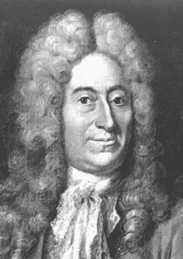The
Speed of Light

Roemeran |
|

Galileo |
1610
- Galileo
discovered that what were previously thought to be stars were
actually moons of Jupiter -
proving that earth & it's moon were not the only "planetary
system".
1676 - The eclipse of Jupiter and its moon Io gave
Danish astronomer Olaus Roemeran (Ole Rømer;
also Roemer) an opportunity to estimate the speed of
light.
His observation was that the same eclipse was seen later or
sooner, depending on earth's proximity to Jupiter. This demonstrated
that light had a finite speed.
Rømer had measured celestial angles in order to use
triangulation to determine an estimate of the distance between
Earth and Jupiter.
Accounting for the time discrepancy in observation of the
same phenomenon, based on the distance between the two points,
he was able to provide the speed of 186,000 miles
per second,
an incredibly close calculation.
Galileo
and The Moons of Jupiter at Rice University |
The
Moons of Jupiter at PHYS.org |
Galileo
at Stanford University
Ole
Rømer at The Museum of Natural History
|
Rømer's
Determination of the Speed of Light at Wikipedia